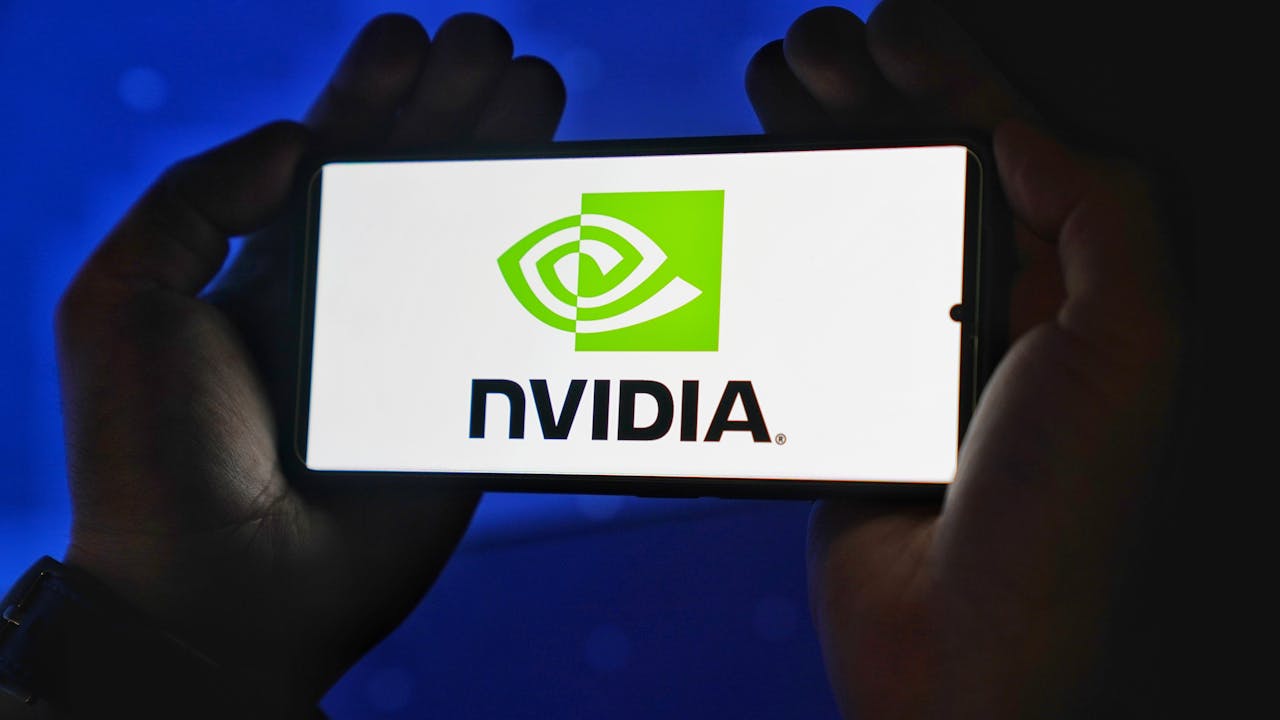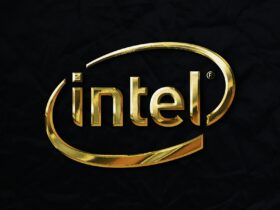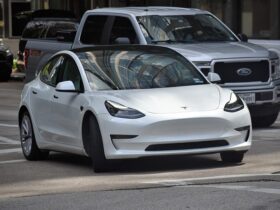At the heart of the global artificial intelligence revolution lies a single company — Nvidia. Once a niche graphics chip designer, it is now the undisputed titan of AI hardware, powering everything from ChatGPT’s vast data centers to autonomous vehicles and supercomputers. But with great power comes great geopolitical exposure.
In 2025, as tensions between Washington and Beijing flare over AI dominance, chip exports, and rare-earth minerals, Nvidia has found itself caught squarely in the crossfire. Its technology, vital for global innovation, has become both a strategic asset for the U.S. and a bargaining chip in the escalating U.S.–China trade war. What began as tariff skirmishes has morphed into a fight over the very future of computing — and Nvidia is right in the middle of it.
Nvidia’s Meteoric Rise to AI Supremacy
Founded in 1993 by Jensen Huang, a Taiwanese-American engineer with a passion for computer graphics, Nvidia began by building GPUs (graphics processing units) for gaming. Three decades later, those same chips have become the foundation of AI model training and inferencing, transforming Nvidia from a consumer hardware firm into a trillion-dollar infrastructure powerhouse.
Today, the company commands over 80% of the global AI accelerator market, supplying chips to nearly every major player — including OpenAI, Microsoft, Meta, Amazon, and Google. Its flagship H-series chips power the sprawling data centers that train large language models and generative AI systems.
As of October 2025, Nvidia’s market capitalization is closing in on $5 trillion, making it one of the most valuable enterprises on Earth — rivaling Apple and Saudi Aramco. But that dominance also paints a target on its back.
Jensen Huang: The Visionary at the Helm
At 62, Jensen Huang is regarded as one of Silicon Valley’s last great technologists. Born in Taiwan and educated at Oregon State and Stanford, Huang co-founded Nvidia in his early 30s and has led it ever since. His ability to foresee trends — from 3D gaming to parallel computing to AI acceleration — is what propelled Nvidia to the forefront of modern computing.
Huang’s charismatic public persona and habit of donning the same black leather jacket on stage have made him a cult hero in Taiwan and beyond. He is worth more than $160 billion, but his influence extends far beyond personal wealth. For both Washington and Beijing, Huang symbolizes the technological power struggle that defines the 21st century.
As Huang himself warned in 2024:
“AI chips aren’t just about business — they’re about national capability. Restricting them may slow others temporarily, but it also motivates them to innovate faster.”
That insight would prove prophetic.
AI Chips: The New Oil of the Digital Age
Artificial intelligence models are hungry — not for fuel or data alone, but for computing power. Training systems like ChatGPT, Claude, and Gemini requires thousands of GPUs running in parallel, often consuming gigawatts of energy. Nvidia’s hardware is the gold standard because it combines raw power with a highly optimized software ecosystem, CUDA, which developers worldwide depend on.
In essence, Nvidia doesn’t just sell chips — it sells a complete AI infrastructure stack, a blend of silicon, networking, and developer tools that has become indispensable to modern machine learning.
That dominance makes Nvidia not merely a commercial player but a strategic lever in the global AI arms race. The U.S. sees it as a tool to maintain technological superiority. China sees it as a vulnerability that must be neutralized.
Caught Between Two Superpowers
When former President Trump re-imposed tariffs on Chinese imports in early 2025 — and Beijing retaliated with rare-earth export restrictions — Nvidia was among the first casualties.
Roughly a quarter of Nvidia’s revenue has historically come from China, where its chips power cloud providers, research labs, and AI startups. But new U.S. export controls banned the sale of Nvidia’s most advanced chips, including the A100, H100, and later H20 models, to Chinese firms without special licenses.
In response, Nvidia developed “compliance chips” like the H20 and L20, engineered to stay just under the U.S. export performance thresholds — a clever but temporary workaround.
However, as Trump expanded restrictions in April 2025 and threatened 100% tariffs on Chinese goods, Beijing struck back, tightening its own import rules and cutting off purchases from U.S. suppliers. The result: Nvidia’s delicate balancing act collapsed into political chaos.
“Nvidia has become a bargaining chip — both literally and figuratively,” said Gil Luria, Head of Tech Research at D.A. Davidson. “They’re central to AI progress, but now they’re also central to trade negotiations.”
The Geopolitics of Silicon: National Security Meets Innovation
AI is no longer viewed as a purely commercial pursuit — it’s a matter of national security. Governments recognize that whoever controls the most advanced chips effectively controls the future of defense, surveillance, and digital infrastructure.
That’s why the U.S. Commerce Department has kept a close eye on Nvidia’s exports and partnerships. Reports surfaced earlier this year that Singapore-based Megaspeed, a Nvidia customer, may have provided indirect access to China for restricted GPUs — allegations Nvidia has denied after an internal investigation.
In a statement, the company said:
“We have engaged with the U.S. government, conducted our own inquiry, and found no evidence of product diversion. Megaspeed operates within U.S. export-control guidelines.”
Nonetheless, the incident underscores how complex and porous global chip supply chains can be — and how easily cutting-edge technology can become entangled in international politics.
China’s Workaround: Accelerate Domestic Innovation
Ironically, U.S. restrictions have pushed China to double down on self-sufficiency. Domestic companies like Huawei, Baidu, and Biren Technology have accelerated efforts to design homegrown AI chips, while universities and research labs have redirected budgets toward hardware R&D.
China’s DeepSeek AI model, which stunned the global tech community earlier this year, was reportedly trained on modified Nvidia H20 chips — a feat that alarmed policymakers in Washington. Whether or not that’s true, it reinforced fears that export controls may be backfiring, motivating Beijing to move faster rather than slower.
As NYU professor Arun Sundararajan puts it:
“Restricting access to Nvidia’s GPUs may be counterproductive. It forces nations to innovate independently, accelerating the very competition the U.S. is trying to delay.”
The $100 Billion Bet on OpenAI and the Future of AI Infrastructure
Even as trade tensions rise, Nvidia continues to expand its global influence. The company has pledged up to $100 billion in investment toward data-center chips for OpenAI and other major partners through 2026. The scale of that commitment underscores how indispensable Nvidia’s technology remains — and how few alternatives exist at comparable performance levels.
Still, competition is heating up. AMD has announced massive new deals with OpenAI, while Intel, Amazon, and startups like Cerebras are fighting for relevance. Yet Nvidia’s software ecosystem and developer lock-in remain its strongest moat. As one industry analyst put it: “You can copy the chip, but not the ecosystem.”
Economic Weaponization and Corporate Diplomacy
The current trade war has transformed Nvidia from a tech manufacturer into an unofficial diplomatic actor. Every product launch, export approval, or supply-chain adjustment now carries geopolitical consequences.
The U.S. government, recognizing the leverage Nvidia holds, has even proposed a revenue-sharing model allowing the company to sell certain chips to China in exchange for a 15% royalty to the U.S. Treasury. The goal: maintain partial engagement without ceding total control.
Yet this uneasy compromise hasn’t stopped Beijing from restricting imports and threatening retaliation. In the latest salvo, China announced new tariffs on U.S. chipmaking equipment and additional licensing barriers for American technology firms.
The result is a cycle of economic weaponization — technology as diplomacy, and diplomacy as economic warfare.
What Lies Ahead for Nvidia
Nvidia’s global position is both enviable and perilous. The company stands as the linchpin of the AI economy, yet its dependence on politically volatile supply chains leaves it vulnerable. If export restrictions tighten further, or if China achieves significant breakthroughs in domestic chipmaking, Nvidia’s dominance could erode faster than expected.
Still, the company’s long-term prospects remain formidable. Its innovations in quantum computing, next-gen networking, and AI software orchestration position it to lead whatever technological wave follows deep learning.
Investors, meanwhile, continue to bet that Huang’s foresight will outlast Washington’s policies. Nvidia’s diversification — expanding into automotive AI, robotics, and healthcare — provides some insulation from the political storm.
Conclusion: The Price of Leadership in the AI Age
Nvidia’s story is no longer just about chips or markets — it’s about the intersection of innovation, power, and politics. The same silicon that enables smarter machines now defines the contours of global influence.
In many ways, the company has become the embodiment of a modern paradox: the more crucial its technology becomes, the less control it has over its destiny. Whether Nvidia can continue to lead while navigating tariffs, export bans, and national security scrutiny will determine not only its future but the trajectory of the entire AI industry.
As the U.S.–China rivalry deepens, one thing is clear: the chip war is the new cold war, and Nvidia — willingly or not — is its most valuable piece on the board.
Reference : U.S. Commerce Department export control overview: commerce.gov – WTO trade dispute summaries: wto.org







Leave a Reply